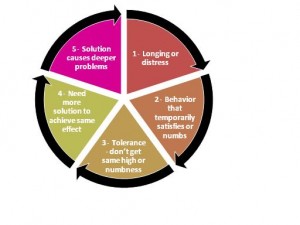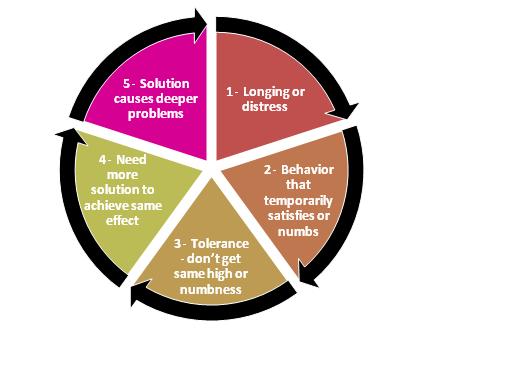Cynthia Heimel lived in New York in the 1970s and she knew actors and artists before their fame—while they were still bussing tables and driving cabs—but she also knew them after their fame. She wrote this:
I pity celebrities. No I really do. Sylvester Stallone, Bruce Willis, and Barbara Streisand were once perfectly pleasant human beings. But now their wrath is awful. I think when God wants to play a really rotten practical joke on you, he grants you your deepest wish and giggles merrily when you realize you want to kill yourself.
You see, Sly, Bruce and Barbara wanted fame. They worked, they pushed, and the morning after each of them became famous, they wanted to take an overdose. Because that giant thing they were striving for, that something that was going to make everything okay, that was going to make their lives bearable, that was going to provide them with personal fulfillment and happiness, had happened. And they were still them. The disillusionment turned them howling and insufferable. (Cynthia Heimel, The Village Voice, January 2, 1990)
“The disillusionment turned them howling and insufferable.” With these words, Heimel drives a dagger into the center of the human heart. We all desperately desire things, and yet their fulfillment fails to fully satisfy.
The western world—and especially the USA—is experiencing an explosion of devastating addictions. We witness the destruction of families, lives, and careers—all on account of these compulsive and seemingly unconquerable obsessions.
But hidden addictions—of equal ruining intensity—conceal deep dangers that these chemical dependencies point to.
The Nature of Addictions
The cycle of addiction helps explain some of our deepest problems. This pattern follows five steps:
- First, there is a deep longing or distress. (It could come from a childhood wound; it could come from a need for validation; or it could come from some sense of emptiness or stress.)
- Second, we go to a behavior or substance to bring temporary satisfaction or simply to numb the pain.
- Third, the behavior or substance no longer satisfies. This is called the tolerance effect.
- Fourth, we increase our dosage of the behavior or substance to regain that desired good feeling or numbness.
- Lastly, the behavior or substance itself creates the very problems we try to avoid; so we go deeper into our “solutions.”
The following graphic illustrates this cyclical pattern:
This downward spiral presents itself most clearly in the classic addictions of substance (alcohol or drugs), sex, and gambling:
- The alcoholic loses his job after coming to work drunk, again.
- The sex-addict sees the police drive up his driveway, and he knows exactly why.
- The gambler loses his family, his home, and retirement, and then bets the loan from his son (to pay for his monthly rent) on the Super Bowl.
However, these extreme outward manifestations—which we’ve all seen—merely mask the subtle, damaging, and secret addictions that control each of our lives.
The classic addiction examples I used above are real stories of destroyed lives of men that I know personally. But so are these:
- A man crying over lunch on this thirtieth birthday because he wasn’t a ten millionaire (only eight!), so he drove himself harder, estranging his wife and children (all away at boarding school) and employees.
- A woman crying to me how her eldest son wasn’t following the Lord they way she thought he should—despite her “doing everything the bible commanded her to do”—so she drove her other children harder, until they too wanted to leave her.
- A successful Christian writer whose latest book failed to sell as well as his previous books, and he alienated his best friends in his determination to make his sequel a roaring success.
- A senior pastor—and leader of a worldwide movement—restructures the organization to put him supremely at the top. When a key partner questions the power play, the partner is ostracized and publicly derided, and twenty years later the senior pastor refuses reconciliation despite hundreds of requests from hundreds of the movement’s adherents.
Tim Keller describes our addictions like this: We take more and greater risks to get an ever diminishing satisfaction from the thing we crave, until a breakdown occurs.
So what can we do?
So how do we satisfy this deep longing of the soul and stop the downward addictive spiral? C. S. Lewis says: “If I find in myself a desire which no experience in this world can satisfy, the most probable explanation is that I was made for another world.”
The solution is to feed our soul with what it needs.
We need to recognize that no earthly created thing can satisfy: be it love or money or prestige or power. We need to see our pursuits are vain; we’ve seen it in others, now we have to see it in ourselves.
And then we need to recognize that the deepest desire beneath all our desires—the deepest desire of our spirits is to have the love of the Lord. We need to hear from God how much he loves us.
And this is precisely what he wants to tell us.
© Copyright 2012, Beliefs of the Heart, Ltd. All rights reserved.



